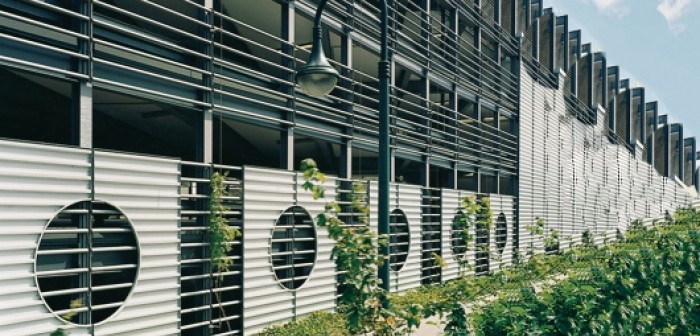 This study, completed in April 2004, was carried out by VTT Technical Research Centre of Finland for the International Zinc Association.
This study, completed in April 2004, was carried out by VTT Technical Research Centre of Finland for the International Zinc Association.
The objectives were to:
• provide a basis for future improvements in life cycle performance of zinc products
• establish environmental performance of a hot dip galvanized steel structure and an equivalent painted structure
• identify the relative importance of coating selection to overall life cycle environmental impact of steel structures
VTT has extensive experience with the Finnish building industry in developing Environmental Product Declarations (EPD®s) for building products.
Scope and Data Sources
The ‘Producta’ balcony systems studied in the assessment are produced by Rannila Steel Oy, Finland and have been in production since 1996. This lightweight balcony system is normally manufactured with a duplex coating (galvanized and painted) for its structural circular hollow sections (CHS) and had been previously studied by VTT in producing an EPD® for the balcony. In order to assess the impacts of hot dip galvanizing and painting separately, two coating specifications were defined to cover the required 60-year service life.
 Systems for comparison
Systems for comparison
The environmental issues assessed were those most commonly applied in EPD®s and “green building” rating systems – i.e., the use of energy, use of natural resources and the impacts of air emissions on global warming potential, acidification and photochemical ozone creation. These aspects were estimated using established life cycle impact category indicators from the Eco-Indicator 95 and DAIA methods. Life cycle inventory data was predominantly sourced from Finnish processes and products, although data for paint materials was sourced from published European databases. Recycling of the steel and zinc was considered in the assessment and allocated using a methodology set out by the International Iron and Steel Institute (IISI).
Durability
The durability of the coating systems was estimated using ISO 14713 and ISO 12944 for galvanizing and painting, respectively. Corrosion rates for galvanized coatings in Finnish environmental conditions are reported as 0.5-1.0μm/year. The 100μm galvanized coating would therefore require no maintenance during the 60-year service life. The painted structure would require maintenance painting every 15 years. The “standard” paint system identified for comparison was a zinc-rich epoxy (40μm DFT)/epoxy primer (2×80μm DFT)/ polyurethane (40μm DFT), chemically curing solvent-borne system. In addition to this “standard” paint system, a low-VOC (water-borne) paint system was also considered in the assessment. A number of assumptions were necessary. Most notably, that the maintenance painting of the structure has the same durability and environmental profile as the original paint application. This was a conservative assumption, but was necessary due to the lack of available environmental data on in-situ maintenance painting.
Results
The results of this pilot study are illustrated below and can be summarised as:
• the choice of coating has a significant influence on the life cycle environmental profile of the balcony structure
• galvanizing has significantly lower results across all three main life cycle impact categories (global warming potential, acidification and photo chemical ozone creation potential)
• durability determines much of the life cycle difference between paint and galvanizing, with the burdens of maintenance painting contributing significantly to the life cycle results of the painted balcony system
• appropriate allocation of the benefits of steel recycling, using the IISI model, is important in estimating the overall life cycle impact.

 Conclusions
Conclusions
This pilot study quantified the principal environmental impacts of a galvanized steel balcony and a painted balcony. For the impact categories considered, the efficiency and durability of the galvanized coating provided for significantly lower life cycle environmental indicators of the balcony, when compared to the equivalent painted system. These results require further exploration, in particular to further define the burdens associated with maintenance painting. However, these refinements are unlikely to change the general results.

